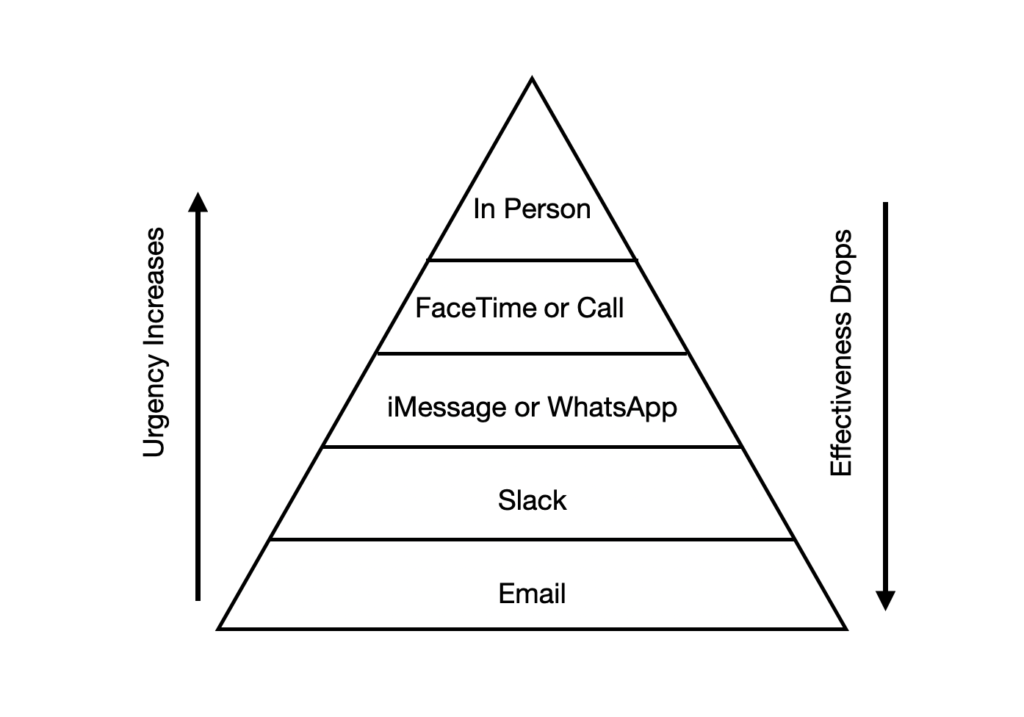
If you only get to have one skill to make you successful as a product manager, have the ability to get things done, have the execution mindset. This article tells you about this important skill:
- What execution mindset means for product managers!
- How product managers should execute effectively and smoothly in organizations!
I used the what’s shared in this article to to run my company, build products, launch products and become a market leader. In another article titled “Product Management Defined by a 9-Figure Company CEO”, I defined Product Management based on my experiences building a successful company around a product. This article explains Role 3 of product managers, as briefly mentioned in that article. It’s written so it can be read on its own, but you can read the main article after. Read it however works for you.
Let’s get into it
Definition of Execution
The general definition of execution is very simple but not easy: getting things done. I find it fascinating how people struggle with the most important thing that makes you successful in any aspect of life, which is getting things done. In organizations, very soon you can see who is capable of execution an who is not. I have seen many smart people who simply can’t execute.
For product managers, execution is very simple. Once the roadmap is decided, push through until it gets launched. Once the roadmap is defined and people agree on a direction, the work begins. Come up with requirements, come up with designs, test and prototype, talk to customers about the high-level ideas. It’s a long marathon until the product or features are launched or deployed, and product managers should stay on top of it. There are so many obstacles and if the execution is not intentional, product manager fall short and the product never gets launched.

There are four must of have qualities that product managers should have to be able to execute:
1 – Focus and Cut Through the Noise
Making products is a marathon. For software, it takes months, and for hardware, it takes years. It’s so hard to stay focused and not lose motivation or gravitate toward the next shiny object. Distractions come in on a daily basis. Changes that stakeholders request. You have to stay the course and stay away from shiny objects. This doesn’t mean you should be closed-minded and don’t listen when stakeholders come to you. Below is what I do to keep myself focused and train our product managers on:
- Climb Up the Tree Technique
When you are lost in a forest, keep going makes you even more lost. The only way to find your way is to climb up the tree and see where you are. This is very true in execution and product management. At a given time, you might be bombarded with requirements and everyone is asking you to change course and implement what they want first since that’s the most important thing for them. You should listen, take note, and then climb up the tree. This means that you will list all the new requirements and feature or bug fix requests and compare them with the old ones. Compare if the previous ones are still a priority or not. Be flexible and make changes if it’s really required. Putting things at the end of the list doesn’t really help you MUST consider new stuff and compare their importance with what’s already in the pipeline.
- Remind Technique
There are other times when you are not necessarily approached by any stakeholder for shifting priorities, but as a product manager, you have doubts and second thoughts about whether you should continue. This is very healthy, and you should not ignore this feeling. This is a very good quality that all product managers should have, which is having the guts to make changes to what they took so much time and effort confirming and communicating.
When such things happen, remind yourself about the priority. Turn the pages for them why you made that decision and why you are not making change or you are making a change. This is very important because we tend to forget the importance of things. Draw a table and and list all the assumptions you decided to make such decision and the evaluate if you still believe in that or something has changed. And believe me things change all the time. Sometimes competitors launch something new that you make you fall behind, you have to pivot. Sometimes your products starts having issues in the field of customers are mad and want something. You have to KEEP the flexibility.

2- Proactive Problem Solving Mindset
As product managers, you have a very cross functional role. Many times you work with developers, architects and project managers and other times you deal with marketing, sales and customers. The first group help you make what you product, turn your invention into a reality. This group is crucial to be partner with. The second group help you launch, promote and sell in so many words. Both groups need to help you to successfully launch a product or feature which is the initial goal of execution for product managers. Product managers are the midfielders and quarterbacks making sure everyone has everything they want to make things happen. It just happen that in reality people don’t have what they want to push something forward. For the first group, things like technical challenges, ambiguous requirements, last minute fire take their attention away. If you assume people are cruising in getting things forward you are wrong. You have to get involved.
You might ask, “There are project managers who make sure people get things on time, why should I get involved?” Well, because project managers take “No” for an answer, and your job is to be the person who doesn’t take “No” for an answer. In follow-up meetings, you have to challenge every no. People say no because of fear or uncertainty, or due to a lack of information. Product managers don’t take “No” for an answer. If the architect says, “We can’t develop this because of such and such technical reason,” if you say okay, you have already compromised the execution of the product. You have to be proactively solving problems to be good at execution and to be a good ad product management, and this is a mindset. I say this is a mindset because it starts by feeling in your brain that you need to intervene, and then help other colleagues to overcome whatever is in front of them to make things happen.
Example: I’ll give you a generic example here. Many times during hardware product development, project managers report delays because a vendor doesn’t provide parts as fast as we planned.
Response of a Product Manager with the execution mindset: “Can we connect with procurement and talk to the vendor directly to see if they can expedite?”
They make the phone call and the vendor always expedites for an additional nominal fee! This happen all the time in our company.
Response of a Product Manager without the execution mindset: “Oh, too bad. I’ll notify others that the project is delayed.” Delays creep into the project and if you don’t nip them in the bud, your product never launches.
We call the product without the mindset, paper pushers. They don’t last long in our organization.
3- Follow up and Follow Through
After you embrace the problem solving and become an execution mindset product manager, you need to rigorously follow up. As a matter of fact, the key to execution is rigorous follow ups. It is impossible to get things done by sending an email to a few colleagues and ask sometime. Think about it, they are also practicing their own version of Focus and Cut Through the Noise. Why should do they priortoitze your request.
You have to follow up like MF. Let’s review the below two scenarios:
Scenario 1: Imagine, in the earlier example about sourcing parts, this happens:
- The product manager accepts “No” for an answer and says, “Let me connect with procurement to see if they can connect with the vendor to expedite.”
- The product manager sends an email to the head of procurement.
- Procurement, being busy, gets back to you in 2-3 days, stating they will try.
- A week passes, and after sending another email, they say they haven’t had a chance yet.
- Procurement sends an email to the vendor after 15 days.
- The vendor gives no response after 1 week.
- Procurement forgets.
- The product manager sends another email to procurement (it’s already been 3 weeks).
- Procurement sends another email to the vendor. The vendor gets back to you, saying they should check.
- The vendor checks and says it’s already too late; if you had called 3 weeks ago, they could have expedited.
This is an example of a non-execution mindset and acting. It’s one of the most frustrating things, and product managers should opt for Scenario 2 instead.
Scenario 2:
- The product manager refuses to take “No” for an answer and says, “Let me connect with procurement to see if they can connect with the vendor to expedite.”
- The product manager calls or walks to the office of procurement.
- The product manager convinces procurement to do the same and call the vendor.
- The vendor picks up and says, “Let me check,” but you insist they check right now.
- The vendor calls back in 2 hours and says yes, they can expedite for a fee. 🙂
This demonstrates the magic of a proactive, execution-oriented mindset. In contrasting these two scenarios, we observe a stark difference in approach and outcome due to the execution mindset of the product manager. The first scenario showcases a passive approach, reliant on emails and waiting, leading to missed opportunities and delays. This exemplifies the pitfalls of a non-execution mindset, where lack of urgency and direct communication can derail even the most straightforward tasks. On the other hand, the second scenario illustrates the power of assertiveness and immediate action. By choosing to directly engage with procurement and the vendor, the product manager not only expedites the process but also secures a positive outcome, highlighting the effectiveness of proactive problem-solving. The lesson here is clear: in the fast-paced world of product management, adopting a hands-on, execution-oriented mindset is not just beneficial; it’s essential for success. This proactive approach can transform challenges into opportunities, turning potential setbacks into victories with just a bit of effort and direct communication.
Tips for become good at follow up/follow through:
- Sense of urgency is key. Your role as product managers is to create and maintain it. Don’t abuse this though. Not everything is urgent.
- Have the mindset of let’s figure it out now. The hierarchy of effectiveness of follow ups to figure things out now are as follow . Always in person is better than call is better than text is better than slack is better than email. Email is a waste of time for follow ups. Don’t spam your colleagues.

- Setup a regular cadence of meetings to track tasks in cross-functional activities such as launch readiness. Ask project managers to set it up and you show up and create urgency, rally the team up and help them to remove roadblocks. This is the most important difference between product managers and project managers. Project managers only inform. Product managers remove roadblocks. The more frequent the follow-up session the more urgent the matter is. Usually when we are closer to the launch, have daily meetings, the farther we are, do weekly meetings.
- Be abrasive, a little bit though. This is very important to know as product managers: you are not running a popularity contest. You have BIG responsibilities on your shoulders to deliver. So if you don’t get what you want, or you feel your colleagues are not committed or are defaulting in their responsibility, be a little abrasive. Escalate and don’t let go. Be polite, obviously, call them out, and demand answers.
4- When in Doubt, Launch
I have learned over the years that there exists a resistance in organizations whose sole purpose is to delay product launches. This resistance is not evil; it’s a result of the great uncertainty that very few people are comfortable taking a risk on. Such fears of uncertainty manifest themselves in the following forms, and as product managers, you should be aware of them, hear every single person out, and make the decision whether to launch or not:
– The product is not ready: This usually comes from engineers. They are not wrong. They are perfectionists and they see failure chances. They also subconsciously look for ways to buy more time to make the software ready or resolve as many defects or do more testing. You should hear them out, evaluate the risk of their concern, and see how catastrophic it will be if their fear comes to reality. Then make the call.
– Marketing Doesn’t have Bandwidth to Launch: This is another common pushback in organizations, and it usually happens when the marketing teams and products teams work in silos and are not coordinated. Otherwise, the marketing team should know the roadmap ahead of time. If such a thing happens, you should sit with marketing leadership and convince them of the importance of the launch and what value it brings to the organization. Also, get creative with how you can bootstrap a soft launch without marketing involvement to get the team excited about the results and then convince the marketing leadership with data. Remember that nothing excites people more than customers being excited about a product or feature.
– Why risk an existing product that works: I have gotten cold feet a few days before launch, wondering why we are risking an existing product line. This always happens when you have a product line that is good and working, and you are proactively upgrading its performance with a new line of products. Usually, commercial teams, marketing teams, or anyone with revenue responsibility is afraid of taking on a new unproven product line. In a way, you are killing your good selling product line with something that is not proven, especially when the product line is a best seller and your flagship product line. This is less of an issue in software than hardware. In software, it happens when a major migration to a new generation of software happens. This is what I do to overcome my fear and lead the team forward:
Tell yourself that if you don’t disrupt your own product line, your competition will, and then you have to play catch up! This will give you such power that you can overcome all fears. It is also very true. Remember, we are talking about product-driven organizations. They grow by making better product lines. Not launching because of fear of the known or avoiding disrupting a line of products that work is a recipe for complacency.
Remember: When in Doubt, Launch!

5- Escalate
Last but the most lever to execute and keep teams going is to escalate. If you are the CEO of your own company and you happen to be product-minded, this doesn’t work for you. Otherwise, you should be comfortable to escalate to someone with more charisma and gravity than you in the organization to convince cross-functional teams and launch. Remember, the reason I say convince is that we don’t want to pull ranks. We want the buy-in of all leaders to move forward.
The comfort to escalate lack of execution, lack of progress, or getting help to remove roadblocks is something that doesn’t exist by default in organizations. People are afraid to escalate because they think they are throwing others under the bus, or the lack of execution reflects on them. It’s quite the opposite if it’s done properly. Properly means that it should be done as the last resort and should be done infrequently. Also, the way you escalate matters. It shouldn’t look or be in the context of throwing people under the bus.
Example of a bad escalation -> “Hey boss, no one does their job, so and so persons are slacking and don’t want to be convinced.”
Example of good escalation -> “Hey boss, I need your help to get the buy-in of the team. There is some push back by the so and so team. I dug deep and their concerns are just concerns and unless we make up our mind and move, we won’t be able to make things happen.” Then explain things to your boss, get his buy-in first and use his help, charm, and charisma to convince others.
If you are a startup CEO, a founder, or an executive where the buck stops with you, you should do your best to convince people with logic and your charisma. And if you feel ineffective, think again; maybe your logic is broken. If you are 100% sure your logic is good and your team pushes back for the sake of pushing back, make the executive call, and also sit with your team. Maybe you have the wrong people on your team.
Conclusion:
- Product Execution is hard.
- You should have the patience and tenacity to deal with cross-functional teams to keep things going and keep everyone motivated.
- Your job as a product manager is to remove roadblocks.
- Be proactive, sense pushbacks, and address them early on.
- When in doubt, launch.
Good Luck!
Amir
P.S. If you are not a ProductCEO subscriber, what are you waiting for?


